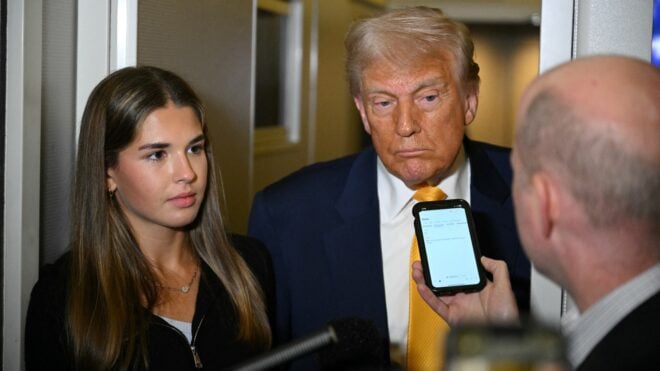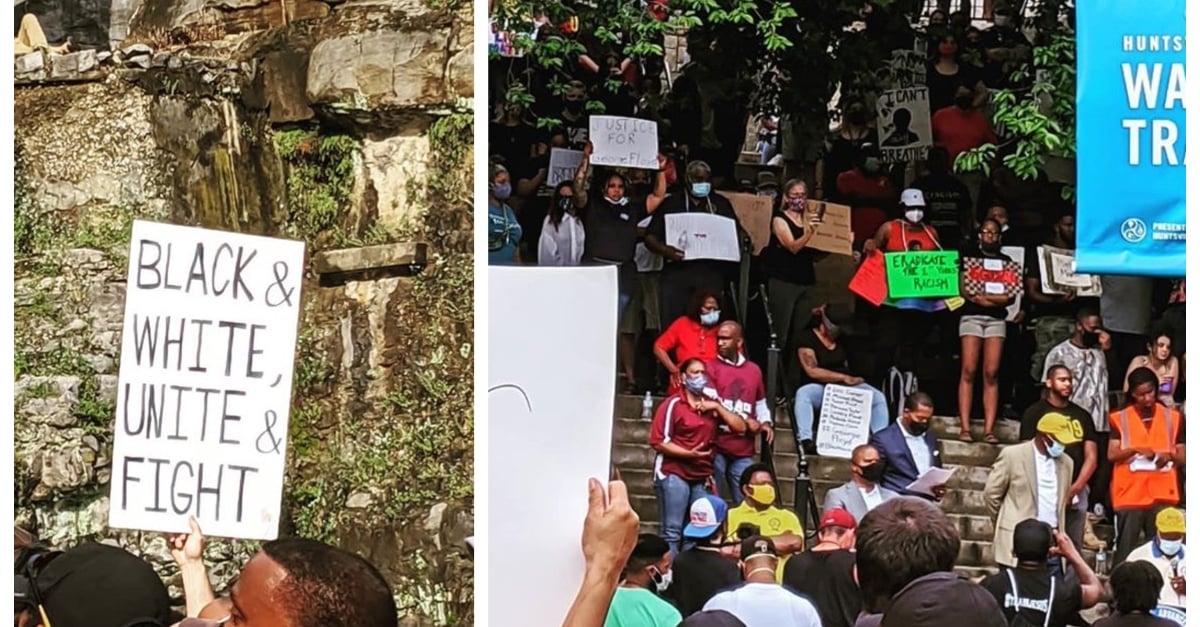
Like many across the country, people living in a small city in northern Alabama have been taking to the streets in recent days, peacefully protesting the death of George Floyd and police brutality across the United States. And like a lot of law enforcement officers and city authorities across the country, the local authorities enacted unjust and unwarranted acts of violence against the peaceful protest.
While demonstrators were peacefully assembled downtown on Wednesday night, well ahead of the city's publicly broadcast curfew of 8 p.m., they were abruptly met with a swift and brutal show of force around 7:15 p.m.
Local news sources report that the rally and protest was organized by a local chapter of the National Association for the Advancement of Colored People (NAACP), saying, "The NAACP rally ended at 6:30 p.m., but the majority of the crowd chose to march from Big Spring Park East to the courthouse."
Local authorities began encouraging protesters to leave, but authorities quickly resorted to violence. A 3-year-old girl was reportedly caught in a cloud of tear gas and was seen screaming as her dad rushed to help her. This is hardly the first example of police violence being perpetrated against children who are at peaceful rallies with their families, but it is a jarring one for a city that likes to pride itself on ostensibly being a "blue dot in a sea of red."
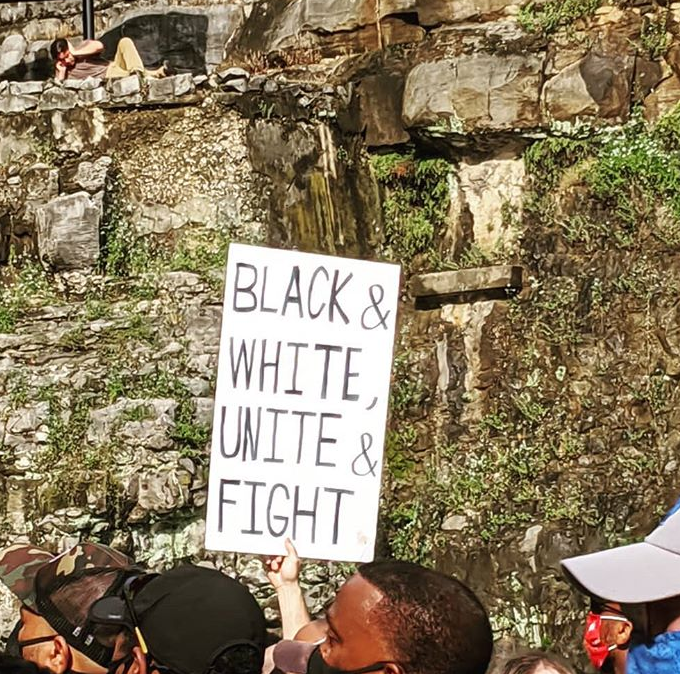
Some people were quick to say that when it comes to the 3-year-old, the blame lies squarely on her parent. And that is a tempting line of thought, if one chooses to ignore the fact that anyone should be able to attend a peaceful protest. Her father wasn't launching grenades at authorities; he was trying to demonstrate to his daughter that standing up for others is the just thing to do.
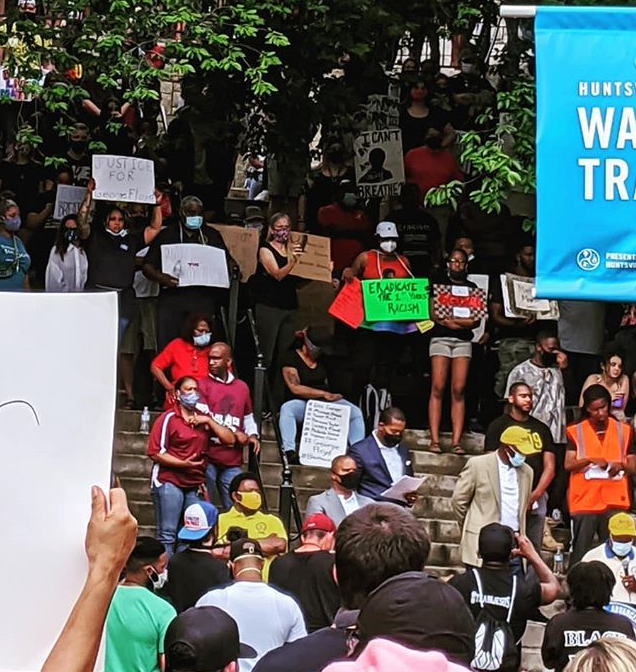
Local Southern historian Vaughn Bocchino was also at the event Wednesday night, and he described what he saw firsthand in great detail:
“We didn’t know exactly where we were supposed to go as we crossed into the Square. We, along with a large knot of strangers, were attempting go to the park via the steps. We were instructed by an HPD [Huntsville Police Department] officer in regular officer clothes that the steps were blocked off and we’d have to walk down hill by the koi fish mural. No big deal. He was respectful but had clearly said that a few hundred times already. His county sheriff colleagues were standing twelve across on each side of the courthouse. They were holding what looked like shotguns with day-glow orange pumps and stocks. I’ll admit that I am ignorant about guns but know what a shotgun looks like.”

“The speeches given by the NAACP speakers stressed anger with peace. A pastor quoted the Bible. Again, forgive my ignorance, but it was something like ‘Your mouth contains the power of life or death.’ That stuck with me. Please, more religiously minded folks, link that passage for me so I can read it again.”
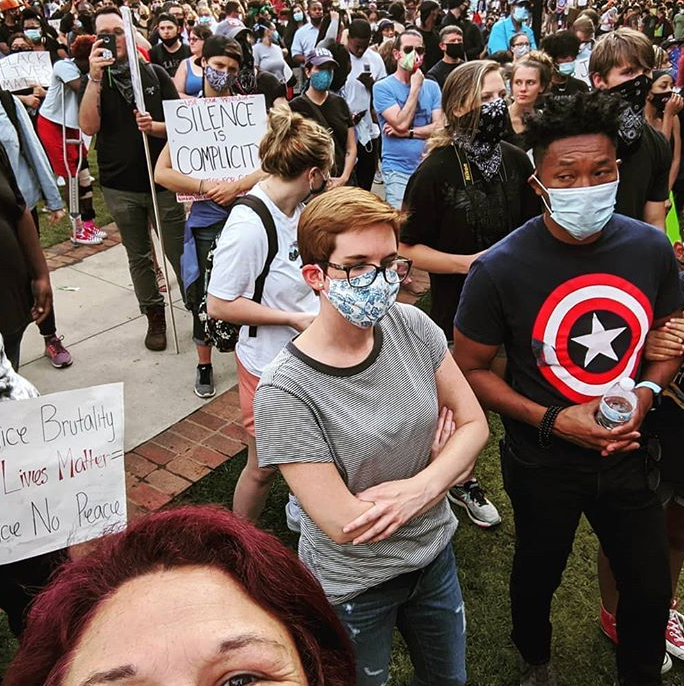
“After the government allowed protest concluded, the people, probably several thousands, marched up to the Confederate monument. It, along with the steps to the courthouse, were blocked by barricades and a much more heavily armed contingent of guards. Other officers were on various floors of the courthouse taking photographs of everyone.
“Mobs are organic beings. At some point, a lot of us white folks ended up front in between the black protesters demanding that the monument come down and heavily armed sheriff deputies. I did not expect or plan to be there, but there I was. Again. I never chanted. I never antagonized. I even took a knee. But what are they going to do? Shoot me? The wrath of hundreds of well connected white people would come down on the city tomorrow. So I recognized my privilege and knelt there.”
“As we were walking along the East Side Square, it was pretty calm. Most people were around the Confederate monument. I’d say less that twenty people were there. There were still twelve deputies on that side of the courthouse. A person shouted, ‘I hope you dream about this!’
"To which the deputy mocking shouted, 'Gas! Gas!' As people on this side of the courthouse (including us) got nervous, then the deputy laughed along with the people around him. …
"[T]hen we saw six or seven fully armored men wielding large guns charging us. They were about fifteen feet away from me before I realized what was happening. Whatever group I was in ran in chaos in the opposite direction. Seeing that many fully armed paramilitary folks who are above the law charging you is terrifying."
“About a half hour passed by and we got back closer.
"Then we heard the five or so flash bangs.
Here's the thing, they are loud and meant to scare you. When they go off around you, it is terrifying. You don't know what they are. They are bright and are explosions."So we ran. We ran wherever we could."
Lt. Michael Johnson with the Huntsville Police Department explained to local news stations, "Once that permit expired, we still waited a good amount of time. It started to get a little hostile. A couple of things were thrown at us." He then added the department's perceived stance: They were not "going to roll the dice."
For Lt. Johnson, using a chemical agent that has been prohibited from being used in international combat since 1925 against peacefully protesting citizens was justified. "We're not going to let this city go through what other cities go through."
Representatives for the city have not commented, but an account run by "Downtown Huntsville" took to Twitter this morning to chat about the city's local distillery. As one might expect, many on Twitter were less than pleased with the ill-timed post.
Like many towns and cities in the Southern US, Huntsville has a long history of segregation. Unlike many towns and cities, Huntsville is still grappling with desegregation and has not even fully desegregated the schools in the city despite a 57-year-old order in place requiring the city to do so.
AL.com reports that "Huntsville City and as many as 50 other school districts around the state are still under court-supervised desegregation as part of unresolved lawsuits that date back to the 1960s and 1970s."
The city has reportedly resolved issues that pertain to transporting students, but it has a long way to go in terms of disciplining students.
“School officials have repeatedly said fixing racial disparities in discipline is likely going to be the district’s biggest hurdle to ultimately getting out from under the desegregation order.
“Black students in Huntsville continue to be disciplined at much higher rates than white students, according to data the district filed with the federal court late last year. This, despite the district overhauling its student code of conduct several times over the past few years.”
The piece also notes, “At Huntsville High, for example, last year 52% of black students received a disciplinary referral, compared to just 12% of white students.”
The city also rose in prominence thanks to the work of Wernher von Braun, a Nazi and member of Hitler's SS who was brought to Huntsville as part of Operation Paperclip. In fact, he was part of a group of more than 700 Nazis who were brought to the United States to bolster the nation's space program. Von Braun was responsible for both the Nazi V-2 rocket and the NASA Saturn V launch vehicle.

